- Why Plant Clematis in Summer?
- Optimal Time for Planting Clematis
- Spring
- Autumn
- Exceptions
- Benefits of Summer Planting
- Missed the Recommended Time?
- Don’t Panic!
- 1. Prepare the Soil
- 2. Choose the Right Clematis Variety
- 3. Protect the Roots
- 4. Provide Adequate Watering
- 5. Provide Shade and Support
- Steps to Take
- Potential Challenges
- Expert Tips for Successful Summer Planting
- Soil Preparation
- Questions and Answers:
- Is it possible to plant clematis in the summer?
- What are the steps to plant clematis in the summer?
- What are the key considerations when planting clematis in the summer?
- Can I still plant clematis if it’s already July?
- What are the risks of planting clematis in the summer?
- What should I do if I missed the recommended planting time for clematis?
- Can I plant clematis in pots during the summer?
- Videos: Top 3 perennials in June garden – salvias , catmint, delphiniums
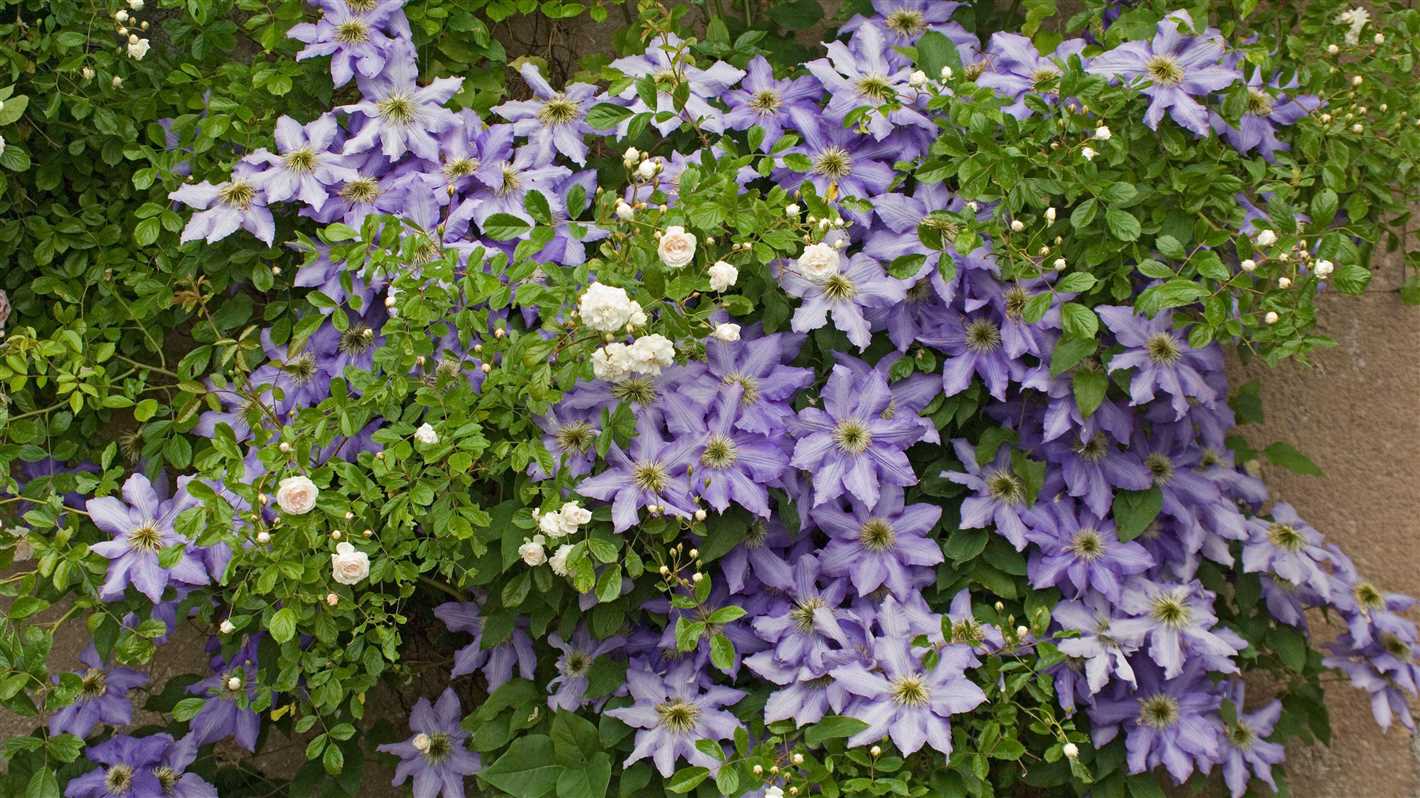
Summer is a great time to plant clematis, a beautiful flowering vine that can add color and charm to your garden. However, if you missed the recommended planting time for clematis, don’t worry! There are still steps you can take to successfully plant these stunning vines in your garden.
First of all, it’s important to choose the right location for your clematis. These vines thrive in full sun or partial shade, so look for a spot in your garden that receives at least six hours of sunlight per day. Additionally, clematis prefer well-drained soil with plenty of organic matter, so make sure to prepare the planting area by loosening the soil and adding compost or other organic matter.
When planting clematis in the summer, it’s crucial to provide extra care and attention to help them establish their roots. Start by digging a hole that is twice the width and depth of the clematis root ball. Gently remove the plant from its container and place it in the hole, making sure that the top of the root ball is level with the surrounding soil. Backfill the hole with soil, firming it gently around the roots.
After planting, be sure to water your clematis thoroughly and regularly to help it adapt to its new surroundings. Provide a layer of mulch around the base of the plant to conserve moisture and suppress weeds. Additionally, consider installing a trellis or other support structure for the clematis to climb on, as these vines prefer to grow vertically.
Remember, even if you missed the recommended planting time for clematis, you can still successfully plant them in the summer. Just be sure to choose the right location, provide extra care and attention to the roots, and water and mulch regularly. With a little bit of patience and diligence, you’ll soon be enjoying the vibrant beauty of these stunning flowering vines in your garden.
Why Plant Clematis in Summer?
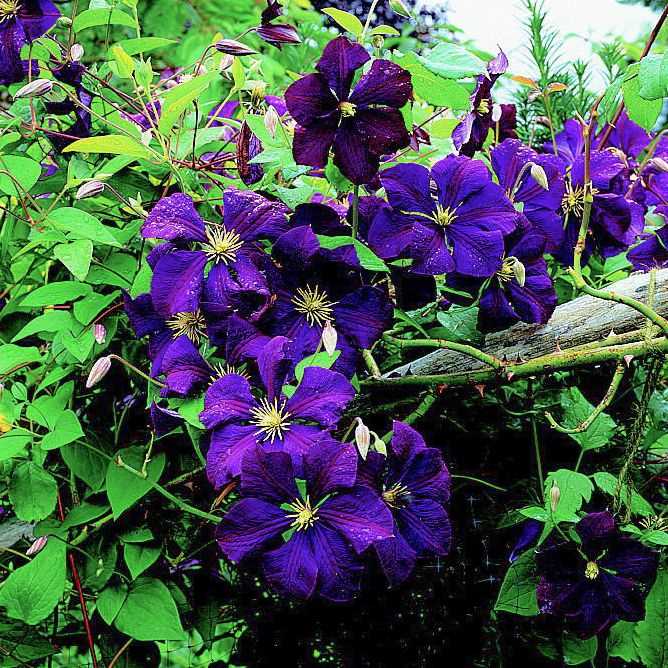

Clematis is a beautiful flowering vine that adds color and elegance to any garden. While it’s typically recommended to plant clematis in the spring or fall, there are several reasons why you might want to consider planting it in the summer:
- Availability: The summer months often bring a wider variety of clematis plants available at nurseries and garden centers. This means you have a better chance of finding the specific variety you are looking for.
- Immediate flowering: When you plant clematis in the summer, you can enjoy the immediate beauty of its flowers. Unlike planting in the spring or fall, where you may have to wait until the following year to see the blooms, summer-planted clematis can start blooming within weeks.
- Root development: Planting clematis in the summer allows it to establish its root system during the warm months. The warm soil temperatures promote faster root growth, helping the plant become established before winter arrives.
- Faster growth: Clematis planted in the summer often experience faster growth compared to spring or fall-planted ones. The longer days and warmer temperatures of summer provide optimal growing conditions for the plant, allowing it to thrive and reach its full potential faster.
- Extended blooming period: By planting clematis in the summer, you can enjoy its beautiful flowers for an extended period. Depending on the variety, clematis can continue to bloom well into the fall, providing a stunning display of color in your garden.
While planting clematis in the summer requires some extra care and attention, it can be a rewarding experience that allows you to enjoy the beauty of this flowering vine sooner. Just make sure to provide proper support and regular watering, and your summer-planted clematis will flourish in no time.
Optimal Time for Planting Clematis
Choosing the right time to plant your clematis is crucial for ensuring its successful growth and blooming. While clematis can be planted during various times of the year, there are certain seasons that are considered to be the most optimal for this task.
Spring
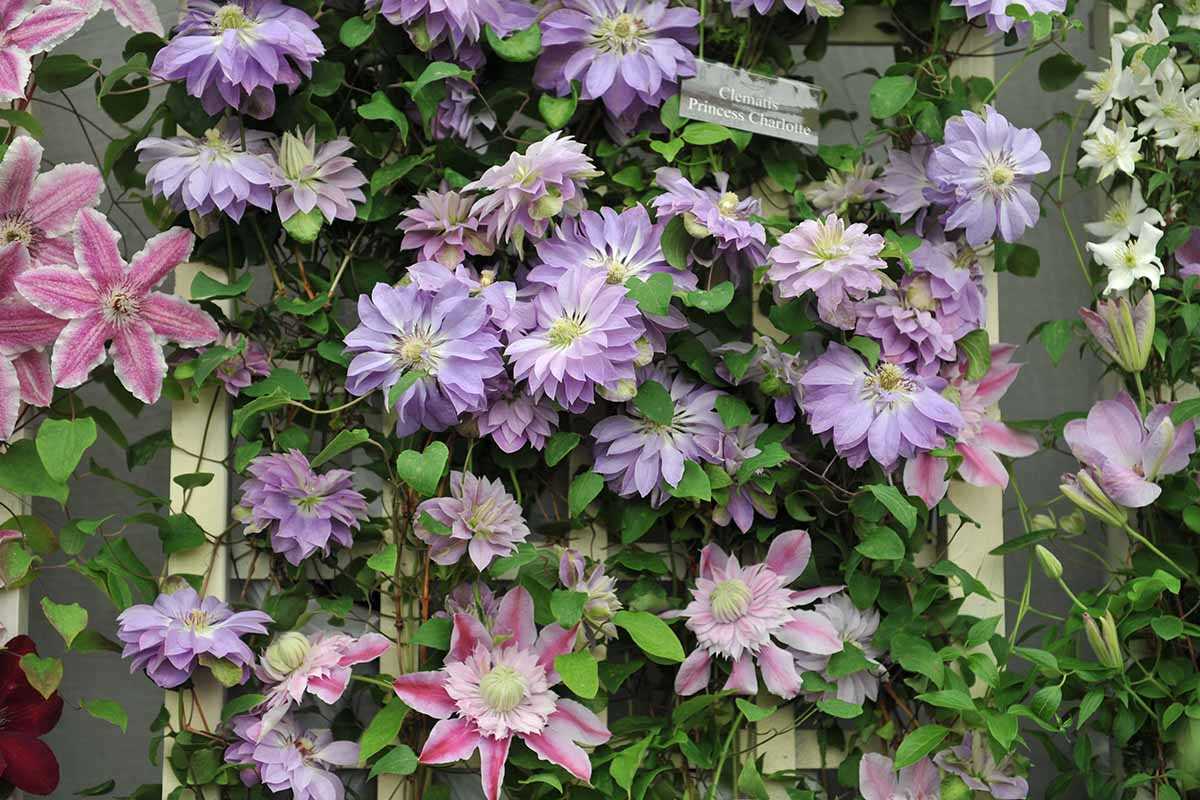

Spring is generally considered the best time for planting clematis. The soil is still cool, which helps the roots establish themselves before the hot summer arrives. Planting in spring also allows the clematis to take advantage of the mild weather and longer growing season, giving it ample time to develop a strong root system and prepare for its blooming period.
Autumn
Another favorable time to plant clematis is in the autumn. This is when the weather starts to cool down, and the soil remains warm from the summer months. Planting in the autumn allows the clematis to establish its roots in the still-warm soil, which can help it survive the winter and promote healthy growth when spring arrives. However, keep in mind that if you plant in late autumn, the clematis may not have enough time to establish itself before winter sets in.
Exceptions
While spring and autumn are generally the recommended times for planting clematis, there are a few exceptions to consider. If you live in an area with extremely hot summers, it may be best to avoid planting in the summer months, as the heat can stress the plant and hinder its growth. In these cases, planting in early spring or late autumn, when temperatures are milder, may be a better option. Additionally, if you purchase a container-grown clematis, it can be planted at any time of the year as long as the ground is not frozen.
It is important to remember that clematis is a delicate plant that requires proper care and attention throughout its growing season. Therefore, regardless of the time of year you choose to plant your clematis, ensure that you provide it with the necessary support, ample sunlight, regular watering, and appropriate fertilization to help it thrive.
Benefits of Summer Planting
- Extended Growing Season: One of the main benefits of planting clematis in the summer is the extended growing season. By planting in the summer, you give the plant more time to establish its roots and grow before the onset of winter.
- Improved Root Development: When planted in the summer, clematis plants have warmer soil temperatures, which promote better root development. This is essential for the plant’s overall health and ability to absorb nutrients and water.
- Faster Establishment: By planting clematis in the summer, you can expect faster establishment compared to planting in the cooler months. The warm weather and longer days provide optimal conditions for plant growth and establishment.
- Reduced Stress: Summer planting allows the clematis plant to become acclimated to its new surroundings before winter. This reduces the transplant stress and increases the chances of survival.
- Increased Flowering: When clematis is planted in the summer, it gets a head start in terms of growth. This can result in earlier flowering in the subsequent year, as the plant has already had time to establish itself during the summer months.
- Availability of Plant Selection: By planting clematis in summer, you may have access to a wider selection of plants at local nurseries or online. Many garden centers stock up on plants during the summer months, making it easier to find the specific variety or color you desire.
Missed the Recommended Time?
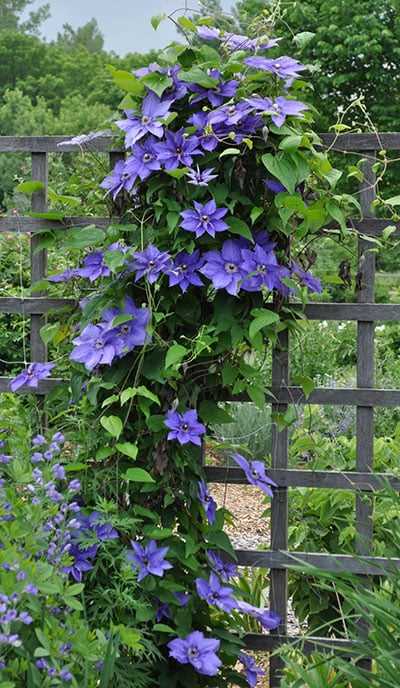

If you missed the recommended time to plant your clematis, don’t worry! There are still steps you can take to ensure successful growth and a beautiful display of flowers.
1. Choose the right location: Select a spot in your garden that receives at least six hours of sunlight per day. Clematis plants thrive in well-draining soil, so make sure the area is not prone to waterlogging.
2. Prepare the soil: Before planting, improve the soil by adding compost or well-rotted manure to the planting hole. This will provide the clematis with the necessary nutrients and help retain moisture.
3. Dig the planting hole: Dig a hole that is twice as wide and deep as the root ball of the clematis. This will give the plant enough room to grow and establish its roots.
4. Plant the clematis: Place the clematis in the hole, ensuring that the top of the root ball is level with or slightly above the soil surface. Backfill the hole with soil, gently firming it around the roots.
5. Water thoroughly: After planting, water the clematis thoroughly to settle the soil and ensure good root-to-soil contact. Provide regular watering during dry periods to keep the soil moist.
6. Mulch: Apply a layer of organic mulch around the base of the clematis to help retain moisture, suppress weed growth, and regulate soil temperature.
7. Support the plant: Install a trellis, obelisk, or other support structure near the clematis to give it something to climb on as it grows.
8. Pruning: In the late winter or early spring, prune the clematis to encourage new growth. Remove any dead or damaged stems and cut back the remaining stems to a pair of healthy buds.
By following these steps, you can still successfully plant your clematis, even if you missed the recommended time. With proper care and attention, your clematis will flourish and reward you with a stunning display of blooms.
Don’t Panic!
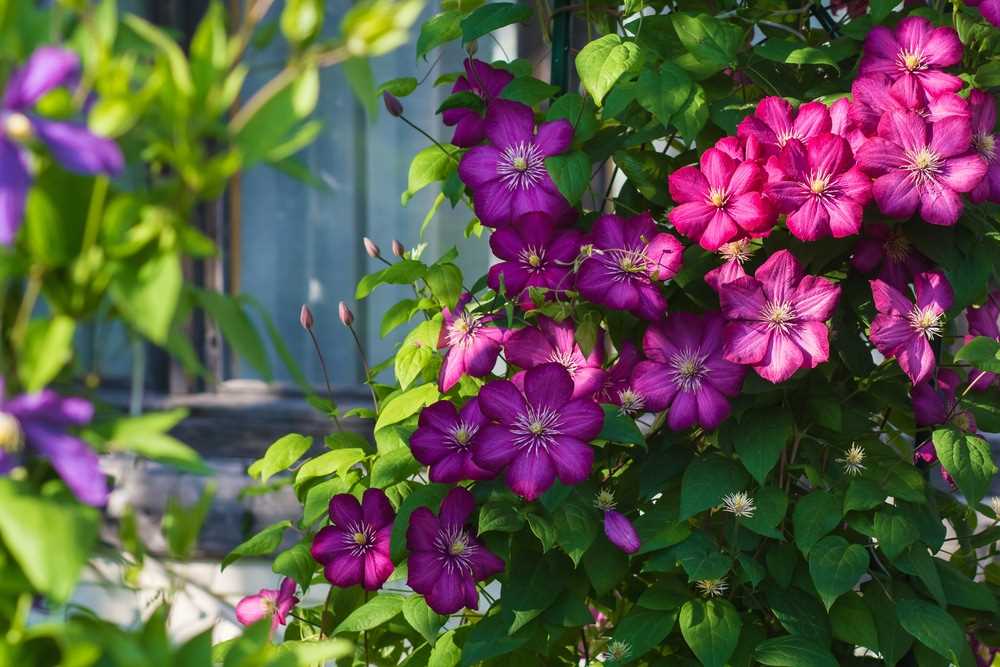

If you missed the recommended time for planting clematis in summer, don’t panic! While it’s true that planting clematis in the early spring or fall is ideal, you can still successfully transplant them during the summer months with a few adjustments to your planting techniques.
1. Prepare the Soil
Start by preparing the soil in the chosen planting area. Clematis prefers well-draining soil with a pH level between 6 and 7. Add compost or organic matter to improve the soil’s fertility and drainage.
2. Choose the Right Clematis Variety
Not all clematis varieties are suitable for planting in the summer. Look for clematis varieties that are known to have good heat tolerance and are suitable for planting in warmer climates. Some popular heat-tolerant varieties include ‘Niobe,’ ‘Hagley Hybrid,’ and ‘Comtesse de Bouchaud.’
3. Protect the Roots
Since clematis plants are more vulnerable during summer planting, it’s important to protect their roots from excessive heat and water loss. Dig a hole large enough to accommodate the plant’s root ball and add a layer of mulch or compost around the base to help retain moisture.
4. Provide Adequate Watering
Watering is crucial during the summer months to ensure the newly transplanted clematis receives enough moisture. Water the plant deeply, ensuring the water reaches the roots. Avoid overwatering, as it can lead to root rot. Monitor the soil moisture and adjust your watering schedule accordingly.
5. Provide Shade and Support
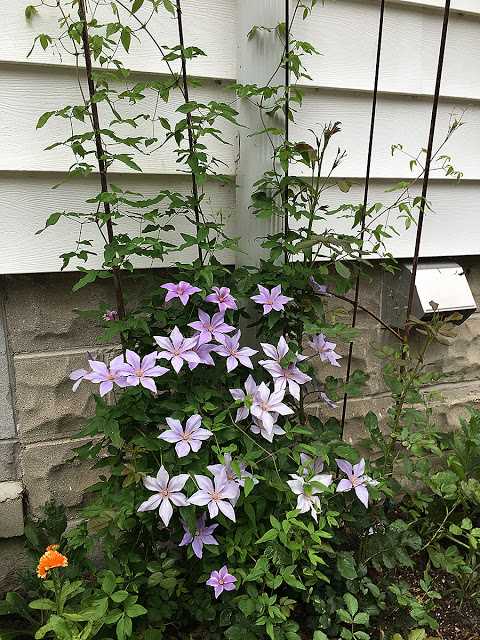

During the summer heat, provide some shade to protect the clematis until it establishes itself. You can use temporary shade cloth or plant the clematis near taller plants or structures that can provide shade during the hottest part of the day. Additionally, make sure to provide a trellis or support structure for the clematis to climb and grow.
Remember, while planting clematis in summer may require a bit more attention and care, it’s still possible to have a successful transplant. Follow these tips, keep an eye on the plant’s health, and soon you’ll be enjoying the beauty of your clematis vines. Happy gardening!
Steps to Take
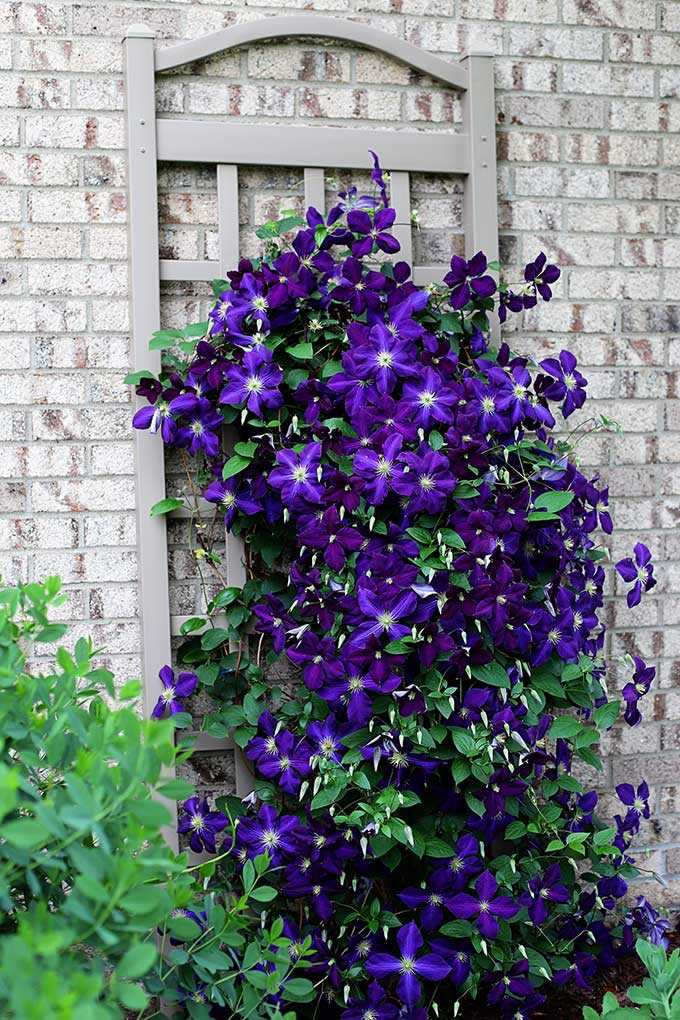

- Choose the right planting location: Clematis plants prefer a sunny spot with well-draining soil. Ensure that the location you choose for planting meets these requirements.
- Prepare the soil: Before planting, improve the soil by adding organic matter such as compost or well-rotted manure. This will help enhance drainage and provide necessary nutrients for the plant.
- Soak the root ball: If you missed the recommended planting time, it’s crucial to ensure that the roots of the clematis are well-hydrated. Soak the root ball in water for about half an hour before planting.
- Dig a proper hole: Dig a hole that is wide and deep enough to accommodate the root ball of the clematis plant. The depth should be sufficient to plant the clematis slightly deeper than it was in its container.
- Plant the clematis: Place the clematis in the hole, ensuring that the root ball is level with or slightly below the surrounding soil. Backfill the hole with soil, gently firming it around the roots as you go.
- Water thoroughly: After planting, water the clematis thoroughly to settle the soil and ensure good root-to-soil contact. Continue to water regularly, especially during the first few weeks after planting.
- Provide support: Depending on the variety of clematis, you may need to provide some form of support for the plant to climb on. Install a trellis, fence, or other support system near the plant at the time of planting.
- Mulch the base: Apply a layer of organic mulch around the base of the clematis plant to help retain moisture, suppress weeds, and regulate soil temperature.
- Monitor for pests and diseases: Keep an eye out for any signs of pests or diseases, and take appropriate measures to control them. Regularly inspect the plant and take action at the first sign of trouble.
- Prune as needed: Pruning is essential for maintaining the health and shape of the clematis. Follow the appropriate pruning guidelines for your specific variety.
Remember, even if you missed the recommended planting time for clematis, with proper care and attention, your plant can still thrive and bring beauty to your garden.
Potential Challenges
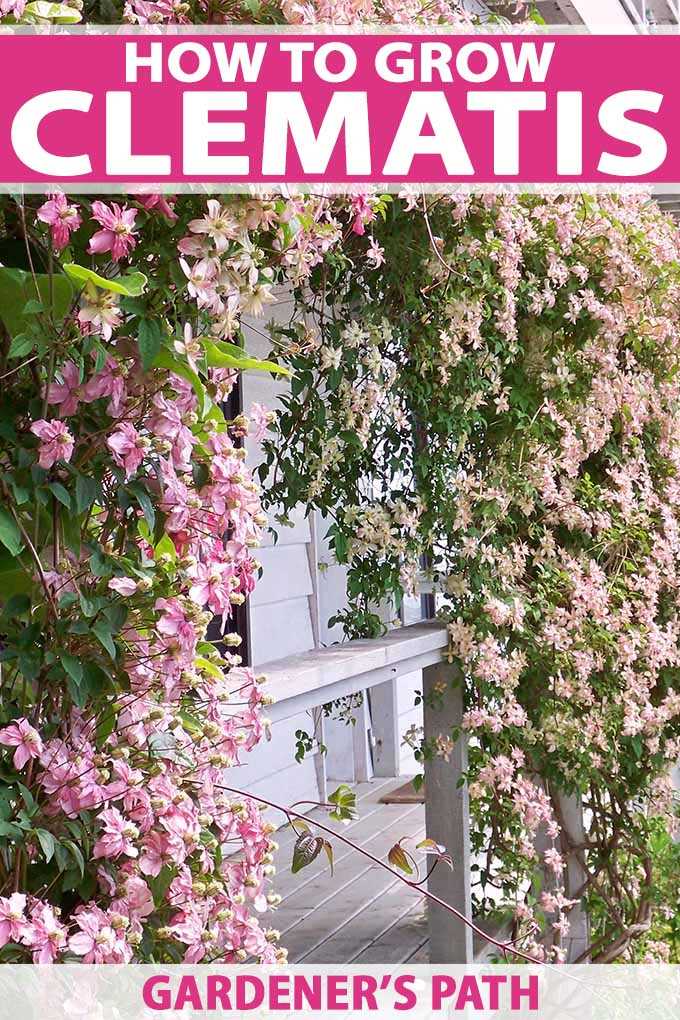

- Delayed establishment: Planting clematis in summer can be more challenging because the plant may take longer to establish itself in hot weather. The stress of high temperatures and direct sunlight can hinder root development and growth, making it harder for the plant to acclimate to its new surroundings.
- Watering needs: Clematis plants have high water requirements, and planting them in summer poses a challenge as the weather tends to be drier. Adequate watering is crucial during this time to ensure the plant’s survival and proper growth. Lack of water can result in wilting, leaf drop, and stunted growth.
- Disease susceptibility: Warm and humid conditions in summer can increase the risk of fungal diseases, such as powdery mildew and various leaf spots, which can affect the health and performance of clematis plants. Proper airflow, spacing, and regular monitoring are necessary to prevent and manage these issues.
- Transplant shock: Planting clematis outside of their recommended time can increase the chances of transplant shock. The stress of being uprooted and transplanted during hot weather can hinder the plant’s ability to recover and establish itself in the new location. Providing adequate care and attention to the plant during this time is essential to minimize the impact of transplant shock.
Expert Tips for Successful Summer Planting
Although it is generally recommended to plant clematis in early spring or fall, there are still ways to successfully plant them in summer if you missed the recommended time. Here are some expert tips to help you achieve successful summer planting:
- Choose the right variety: Some clematis varieties are more resilient and better suited for summer planting. Look for heat-tolerant varieties that can withstand the hot summer temperatures.
- Prepare the planting area: Ensure that the planting area is well-prepared. This includes loosening the soil, removing any weeds or grass, and adding organic matter to improve drainage and fertility.
- Provide ample water: Water the clematis thoroughly before planting and continue to provide regular water during the summer months. Clematis requires consistent moisture, especially during hot and dry periods.
- Protect from extreme heat: Shield the newly planted clematis from direct sunlight and extreme heat by providing some shade. This can be done by using a shade cloth or placing the clematis near a larger plant that can provide some shade.
- Provide support: Install a trellis, arbor, or other support structure near the planting site to allow the clematis to grow and climb. This will help the plant establish itself and ensure proper growth.
- Monitor for pests and diseases: Keep an eye out for common pests and diseases that can affect clematis, especially during stressful summer conditions. Regularly check the plant for any signs of infestation or disease and take appropriate measures to address them.
- Apply mulch: Apply a layer of organic mulch around the base of the clematis to help retain moisture, regulate soil temperature, and suppress weeds. Make sure to leave a small gap around the stem to prevent rotting.
- Prune carefully: Avoid rigorous pruning after summer planting. Instead, focus on removing any dead or damaged parts and shaping the plant as necessary. Save major pruning for late winter or early spring.
By following these expert tips, you can increase the chances of success when planting clematis in the summer. Remember to provide proper care and attention to your newly planted clematis to help it establish and thrive in its new home.
Soil Preparation
Proper soil preparation is crucial for the successful growth and development of clematis plants. When planting the vine in summer, it is important to ensure that the soil provides the necessary nutrients and drainage for the plant to thrive. Follow these steps to prepare the soil before planting:
- Choose the right location: Clematis plants prefer a sunny location with at least six hours of direct sunlight per day. Ensure that the selected spot has well-draining soil and is away from any competing tree roots.
- Clear the area: Remove any weeds, rocks, or debris from the planting site. This will eliminate competition for nutrients and provide a clean area for planting.
- Amend the soil: Test the soil pH to determine if any amendments are needed. Clematis plants prefer a slightly acidic to neutral soil pH of 6.0 to 7.0. If the soil pH is too high or too low, amend it accordingly with lime to raise the pH or sulfur to lower it. Follow the instructions on the amendment product for the recommended amount to use.
- Add organic matter: Improve the soil structure and fertility by adding organic matter. This could include compost, well-rotted manure, or leaf mold. Spread a layer of organic matter over the planting area and mix it into the top 6-8 inches of soil using a garden fork or tiller.
- Ensure proper drainage: Clematis plants cannot tolerate waterlogged soil. If the soil at the planting site has poor drainage, consider creating a raised bed or adding coarse sand or perlite to the soil to improve drainage.
- Water the soil: Once the amendments and organic matter are incorporated into the soil, water it thoroughly to settle it and ensure that the amendments are evenly distributed.
By properly preparing the soil before planting, you can create a favorable environment for clematis plants to establish and grow successfully, even if you missed the recommended planting time.
Questions and Answers:
Is it possible to plant clematis in the summer?
Yes, it is possible to plant clematis in the summer. Although it is recommended to plant them in spring or fall, you can still plant them in the summer if you missed the recommended time.
What are the steps to plant clematis in the summer?
To plant clematis in the summer, you should start by choosing a location with well-drained soil and partial shade. Dig a hole that is twice as wide and deep as the root ball of the plant. Place the clematis in the hole and backfill it with soil, making sure to water it thoroughly. Finally, mulch around the base of the plant to retain moisture.
What are the key considerations when planting clematis in the summer?
When planting clematis in the summer, it is important to choose a location with well-drained soil and partial shade. Make sure to water the plant regularly, especially during hot and dry periods. You should also mulch around the base of the plant to retain moisture and protect the roots from extreme temperatures.
Can I still plant clematis if it’s already July?
Yes, you can still plant clematis in July. While it is recommended to plant them in spring or fall, clematis can still establish well if planted in the summer. Just make sure to choose a location with well-drained soil and provide adequate water and mulching to help the plant thrive.
What are the risks of planting clematis in the summer?
Planting clematis in the summer can be riskier compared to planting in spring or fall. The main risks include heat stress, drought, and lack of sufficient root establishment. To mitigate these risks, it is important to choose a location with partial shade, water the plant regularly, and provide mulching to retain moisture and protect the roots.
What should I do if I missed the recommended planting time for clematis?
If you missed the recommended planting time for clematis, you can still plant them in the summer. Just make sure to choose a location with well-drained soil and partial shade. Provide regular watering and mulching to help the plant establish well. It is also recommended to prune the clematis to encourage new growth and remove any damaged or dead parts of the plant.
Can I plant clematis in pots during the summer?
Yes, you can plant clematis in pots during the summer. Make sure to choose a pot with good drainage and fill it with well-draining potting soil. Place the clematis in the pot and water it thoroughly. Keep the pot in a location with partial shade and provide regular watering to prevent the plant from drying out. You can also use a trellis or support to help the clematis grow vertically.







